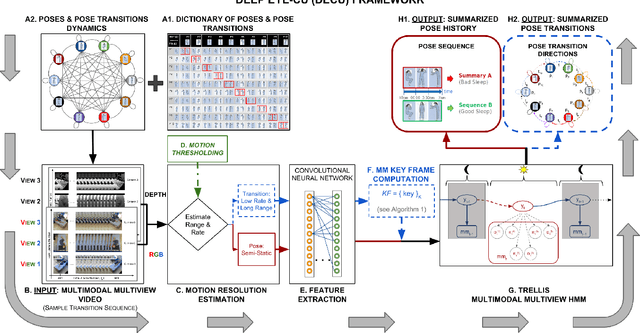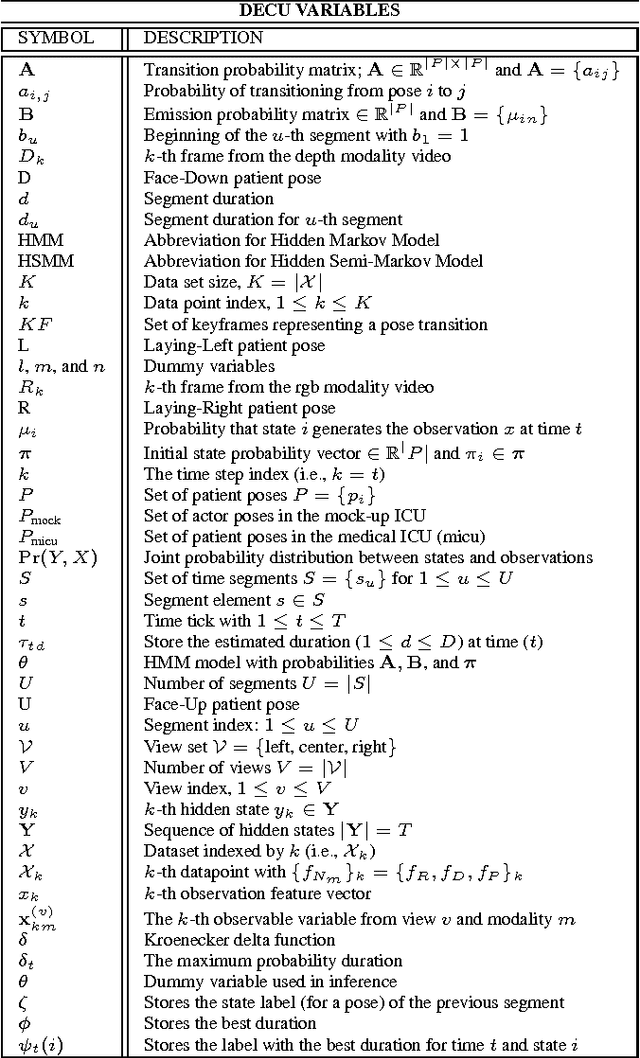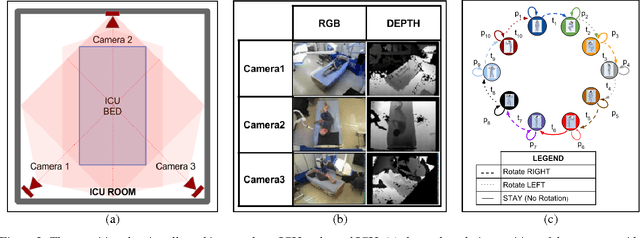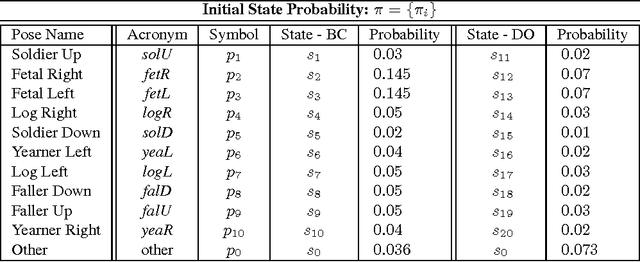Summarization of ICU Patient Motion from Multimodal Multiview Videos
Paper and Code
Jun 28, 2017



Clinical observations indicate that during critical care at the hospitals, patients sleep positioning and motion affect recovery. Unfortunately, there is no formal medical protocol to record, quantify, and analyze patient motion. There is a small number of clinical studies, which use manual analysis of sleep poses and motion recordings to support medical benefits of patient positioning and motion monitoring. Manual processes are not scalable, are prone to human errors, and strain an already taxed healthcare workforce. This study introduces DECU (Deep Eye-CU): an autonomous mulitmodal multiview system, which addresses these issues by autonomously monitoring healthcare environments and enabling the recording and analysis of patient sleep poses and motion. DECU uses three RGB-D cameras to monitor patient motion in a medical Intensive Care Unit (ICU). The algorithms in DECU estimate pose direction at different temporal resolutions and use keyframes to efficiently represent pose transition dynamics. DECU combines deep features computed from the data with a modified version of Hidden Markov Model to more flexibly model sleep pose duration, analyze pose patterns, and summarize patient motion. Extensive experimental results are presented. The performance of DECU is evaluated in ideal (BC: Bright and Clear/occlusion-free) and natural (DO: Dark and Occluded) scenarios at two motion resolutions in a mock-up and a real ICU. The results indicate that deep features allow DECU to match the classification performance of engineered features in BC scenes and increase the accuracy by up to 8% in DO scenes. In addition, the overall pose history summarization tracing accuracy shows an average detection rate of 85% in BC and of 76% in DO scenes. The proposed keyframe estimation algorithm allows DECU to reach an average 78% transition classification accuracy.
 Add to Chrome
Add to Chrome Add to Firefox
Add to Firefox Add to Edge
Add to Edge